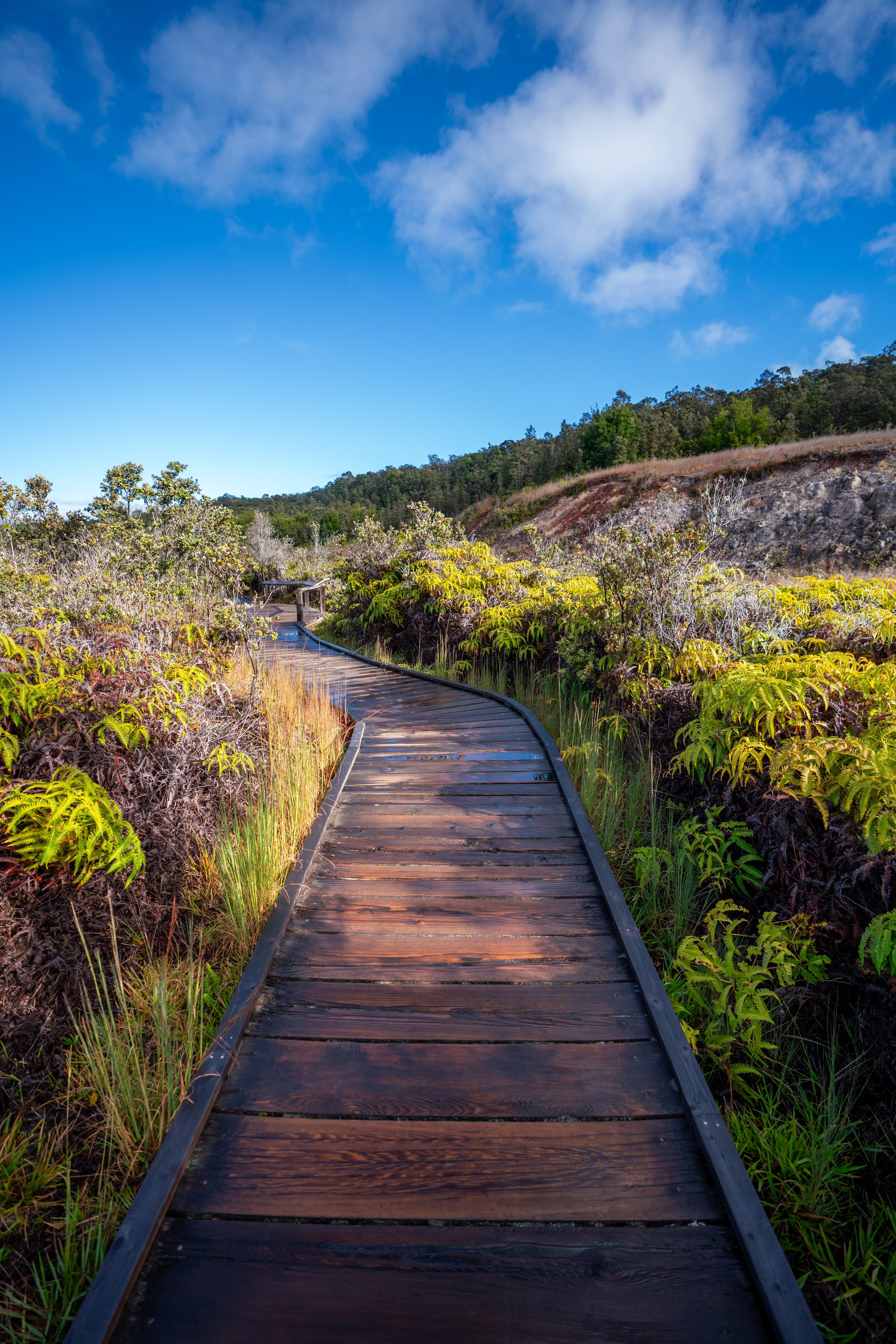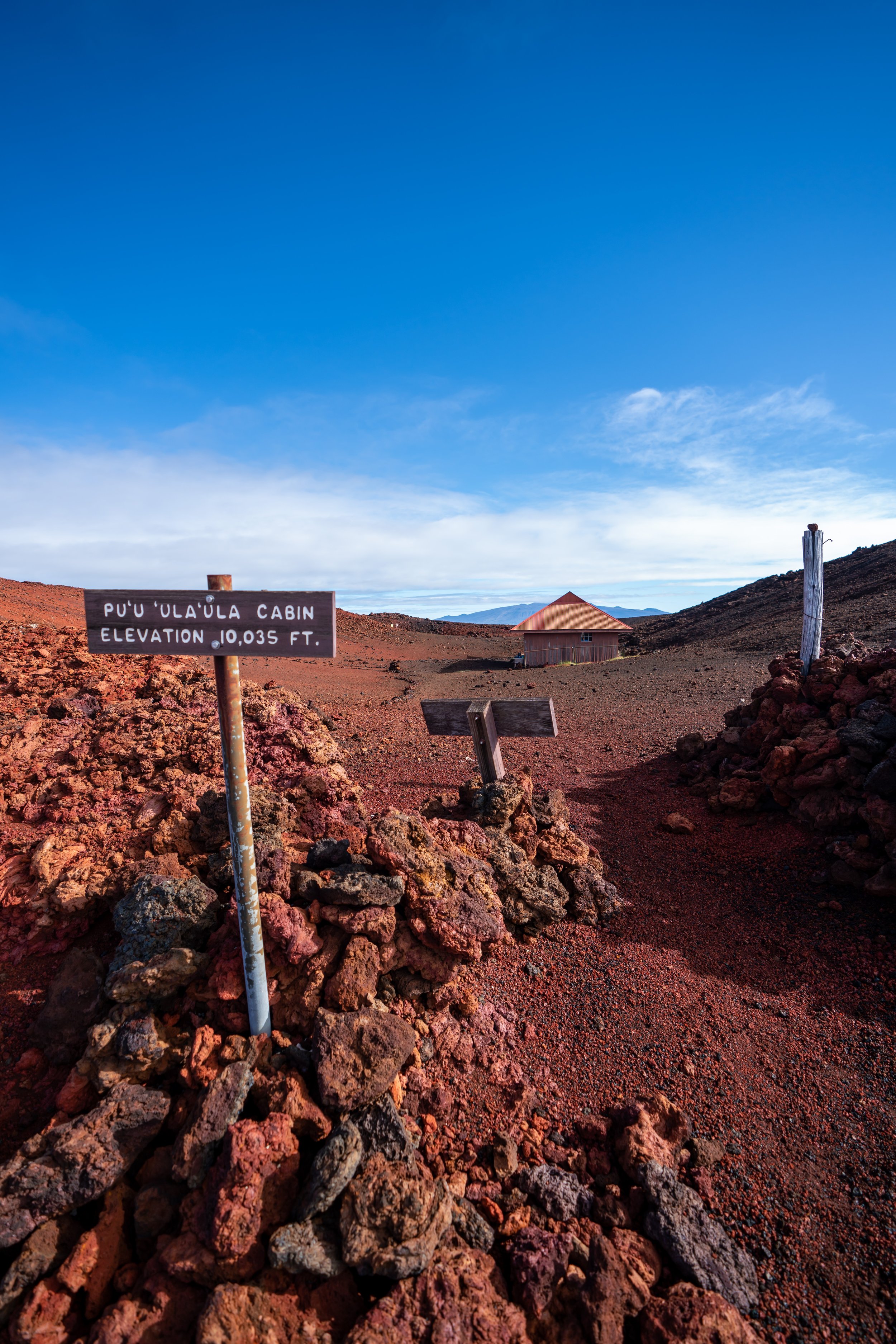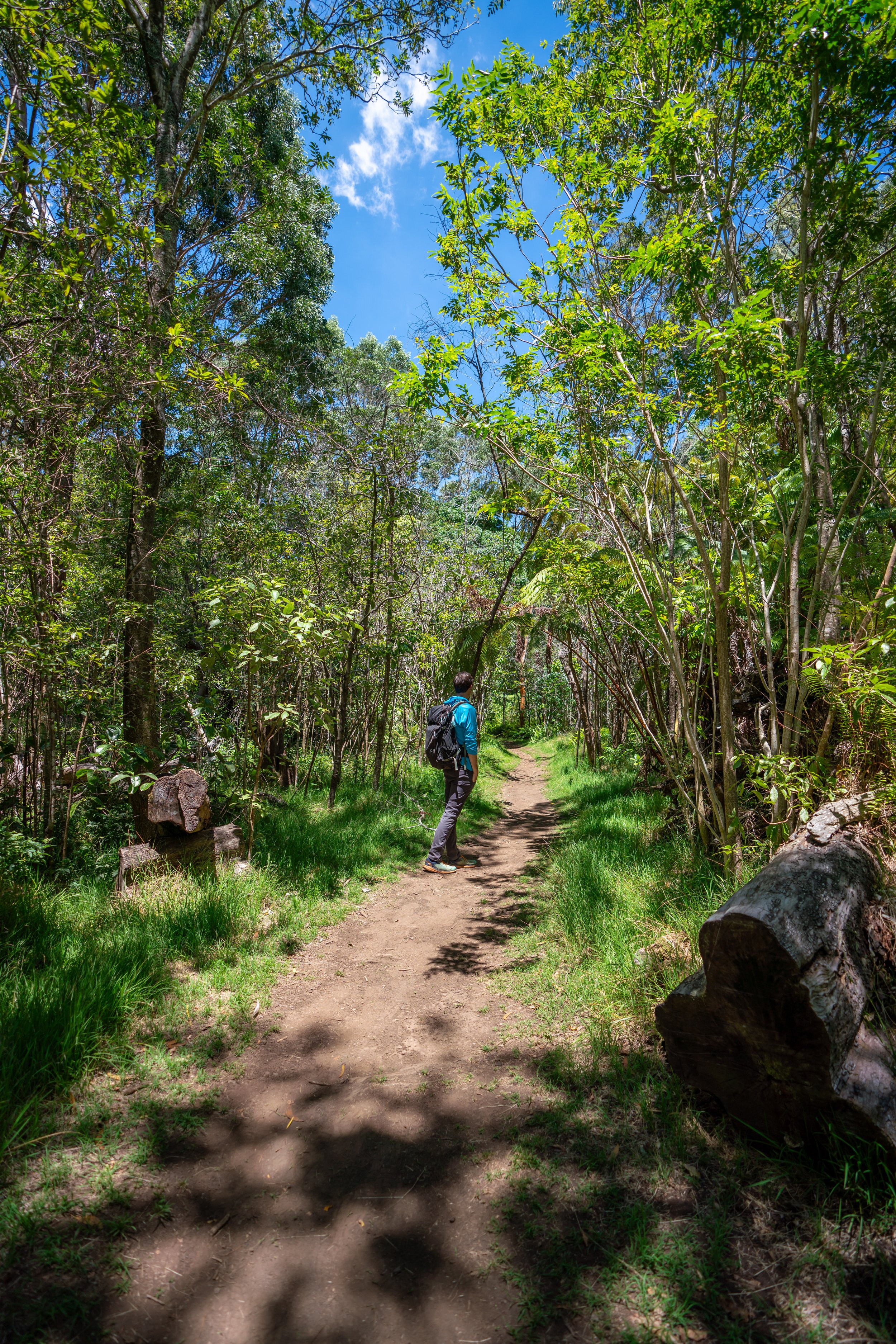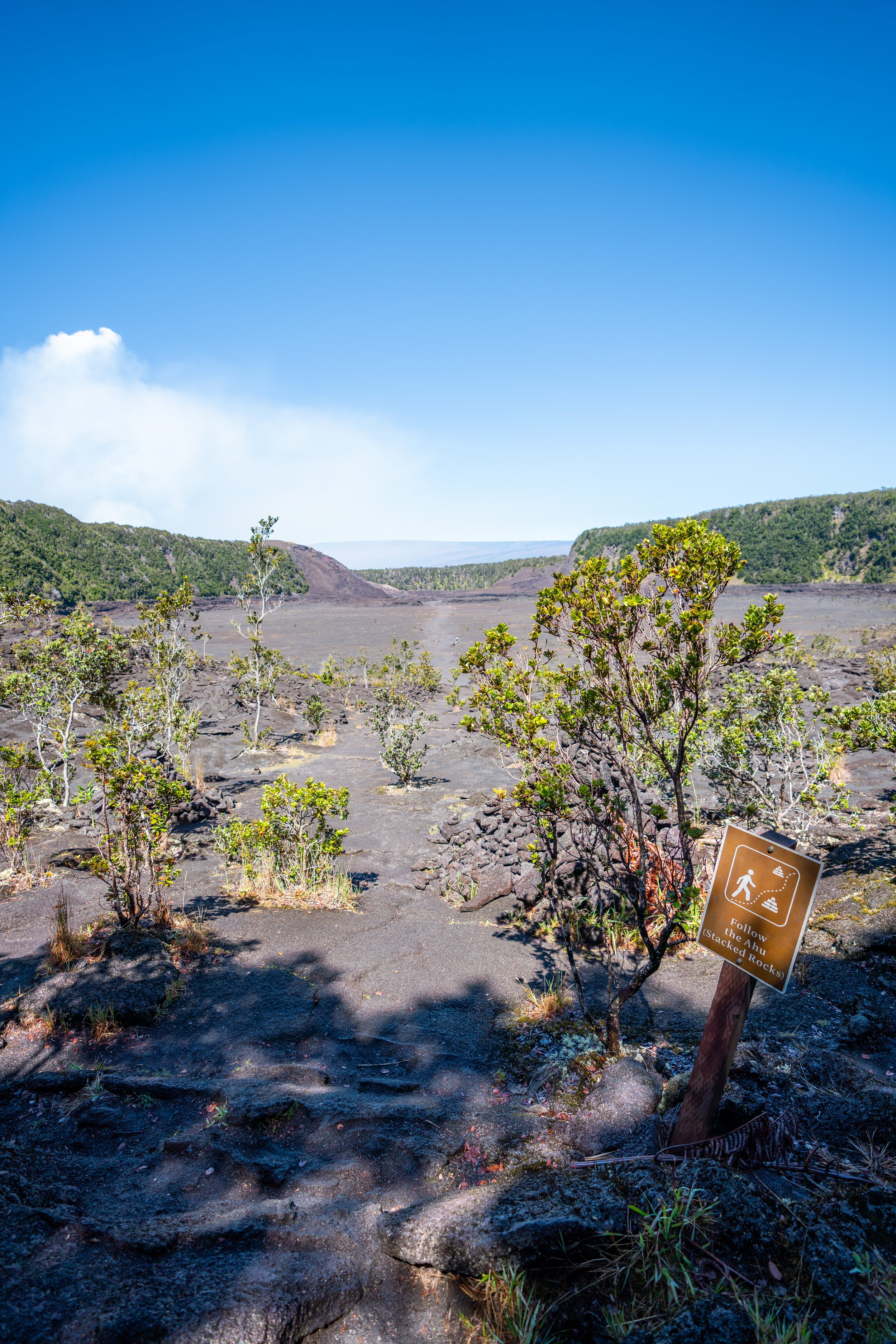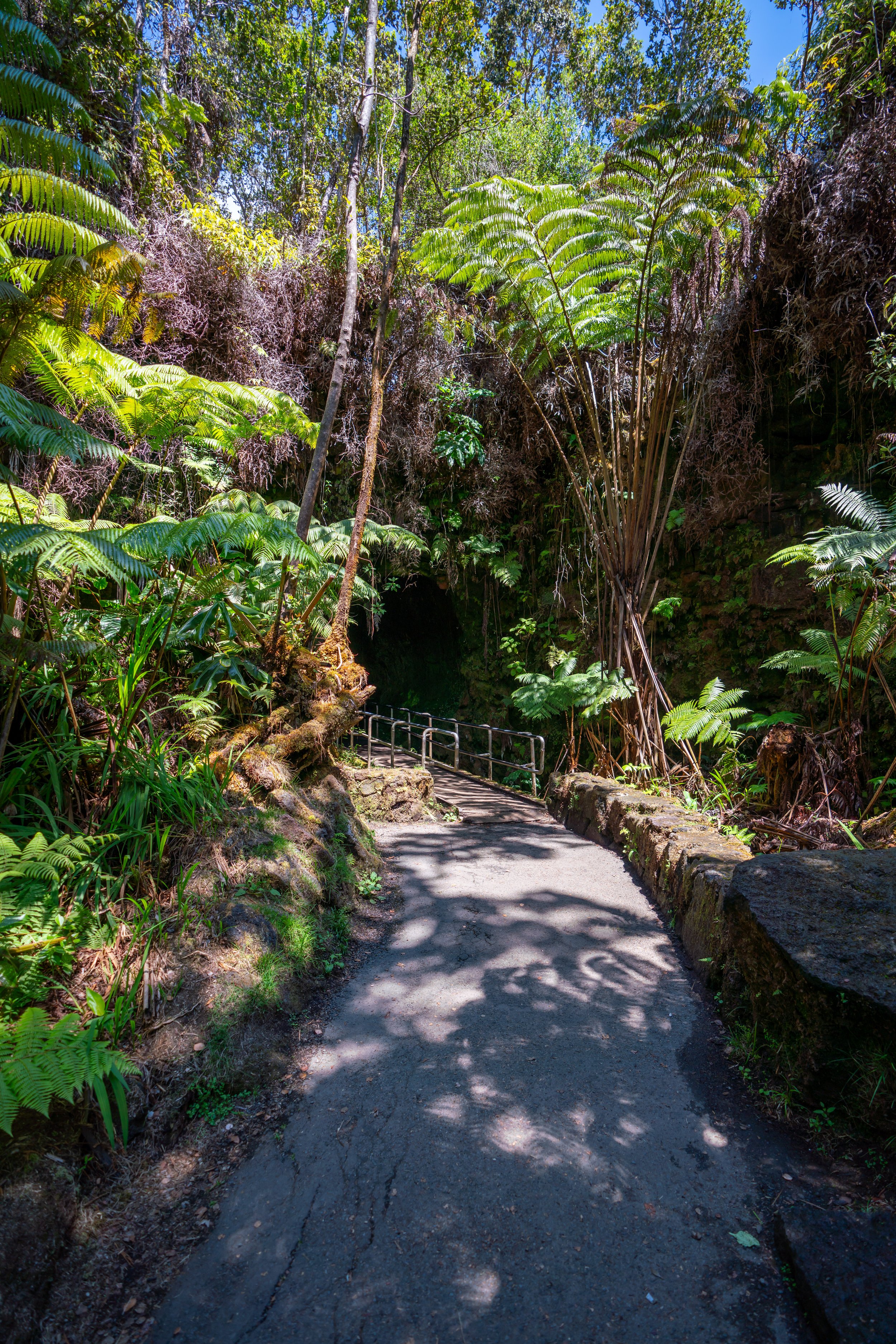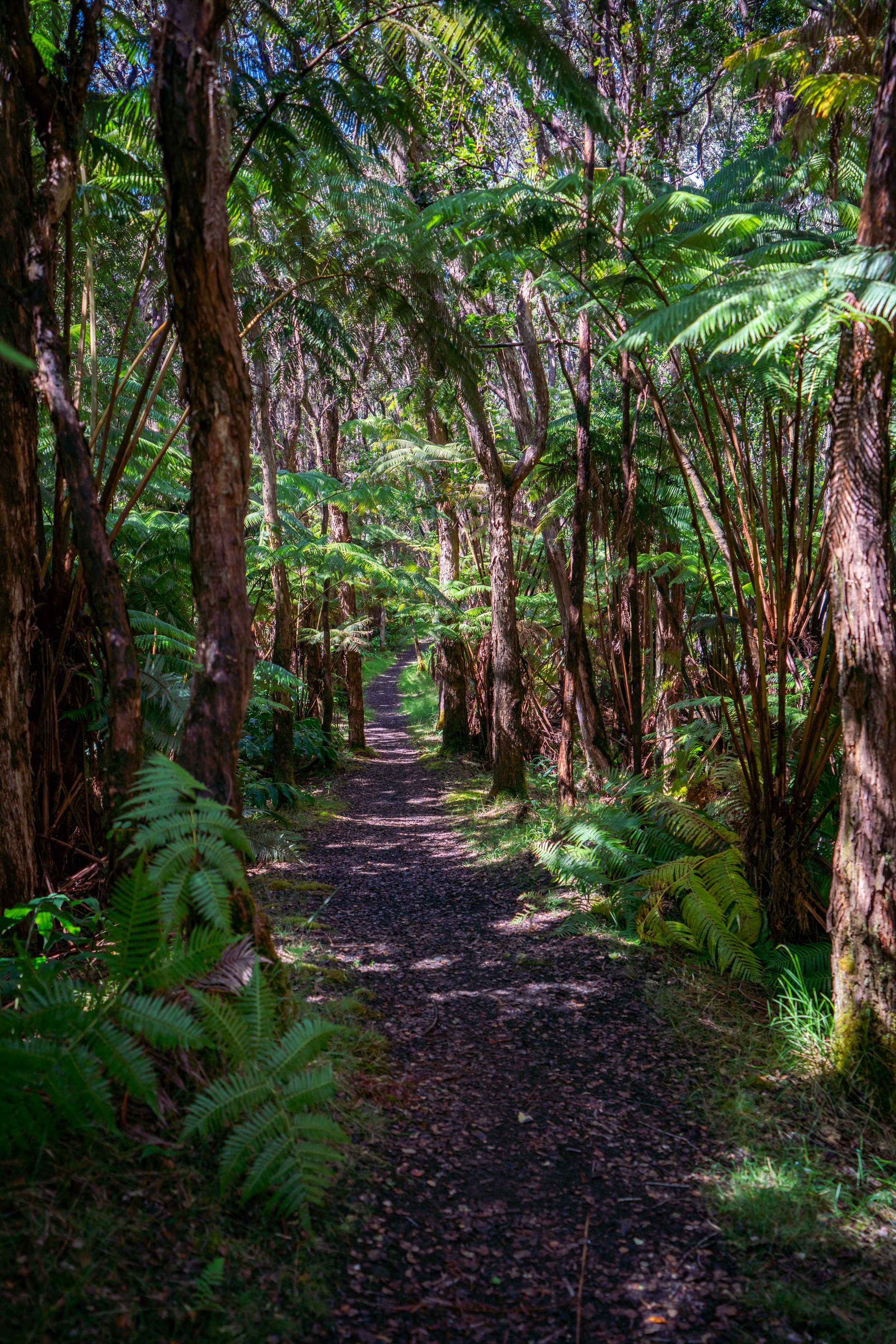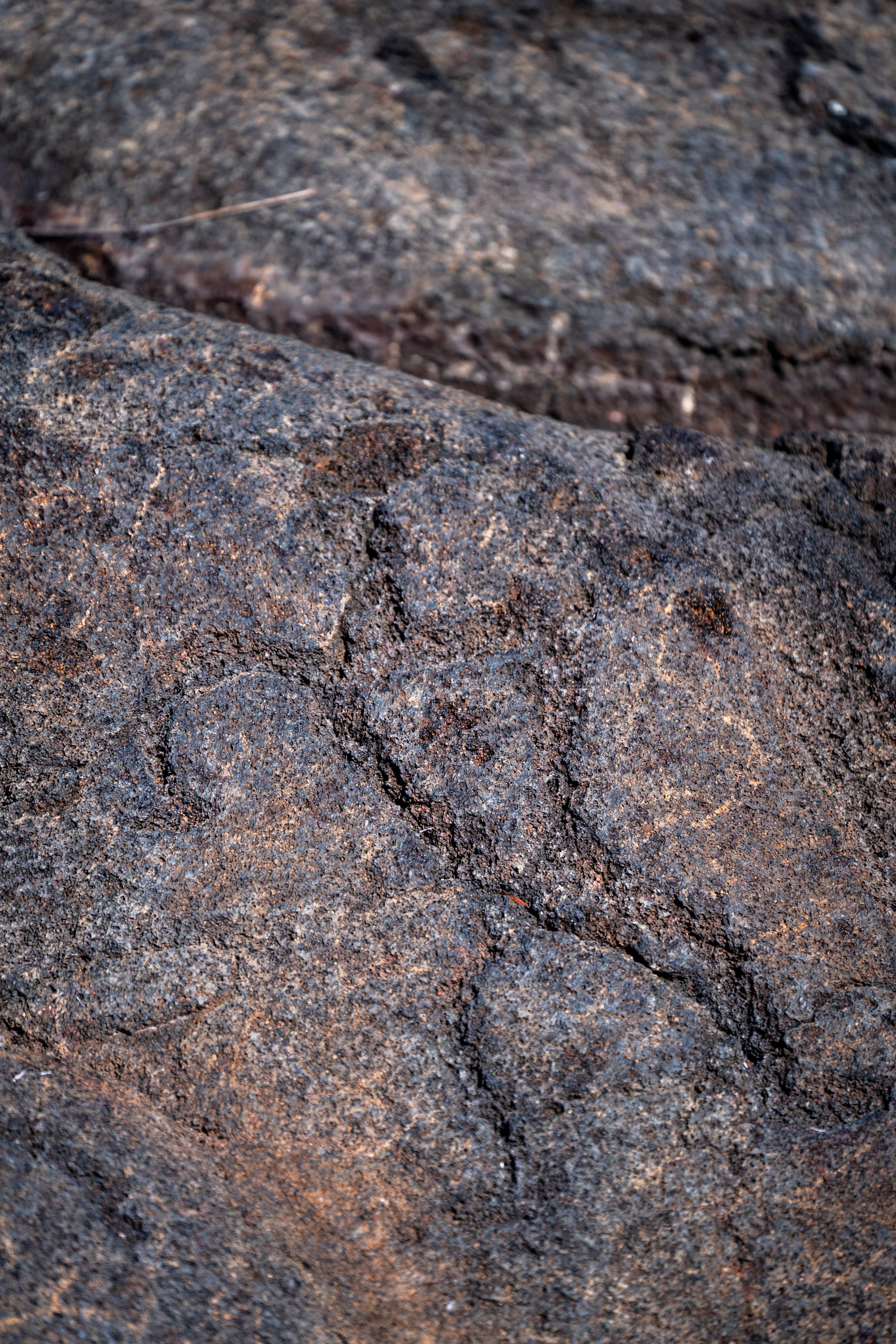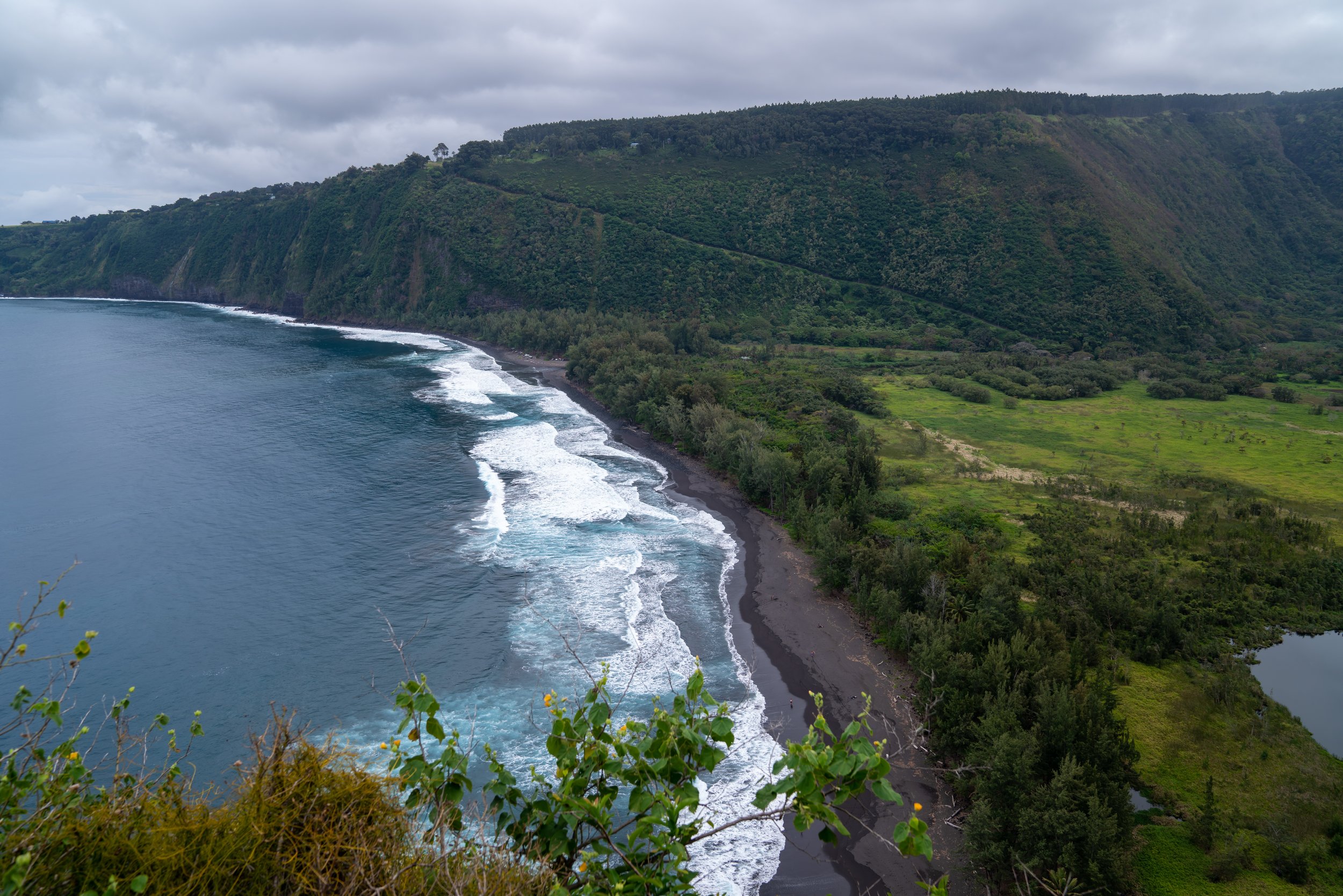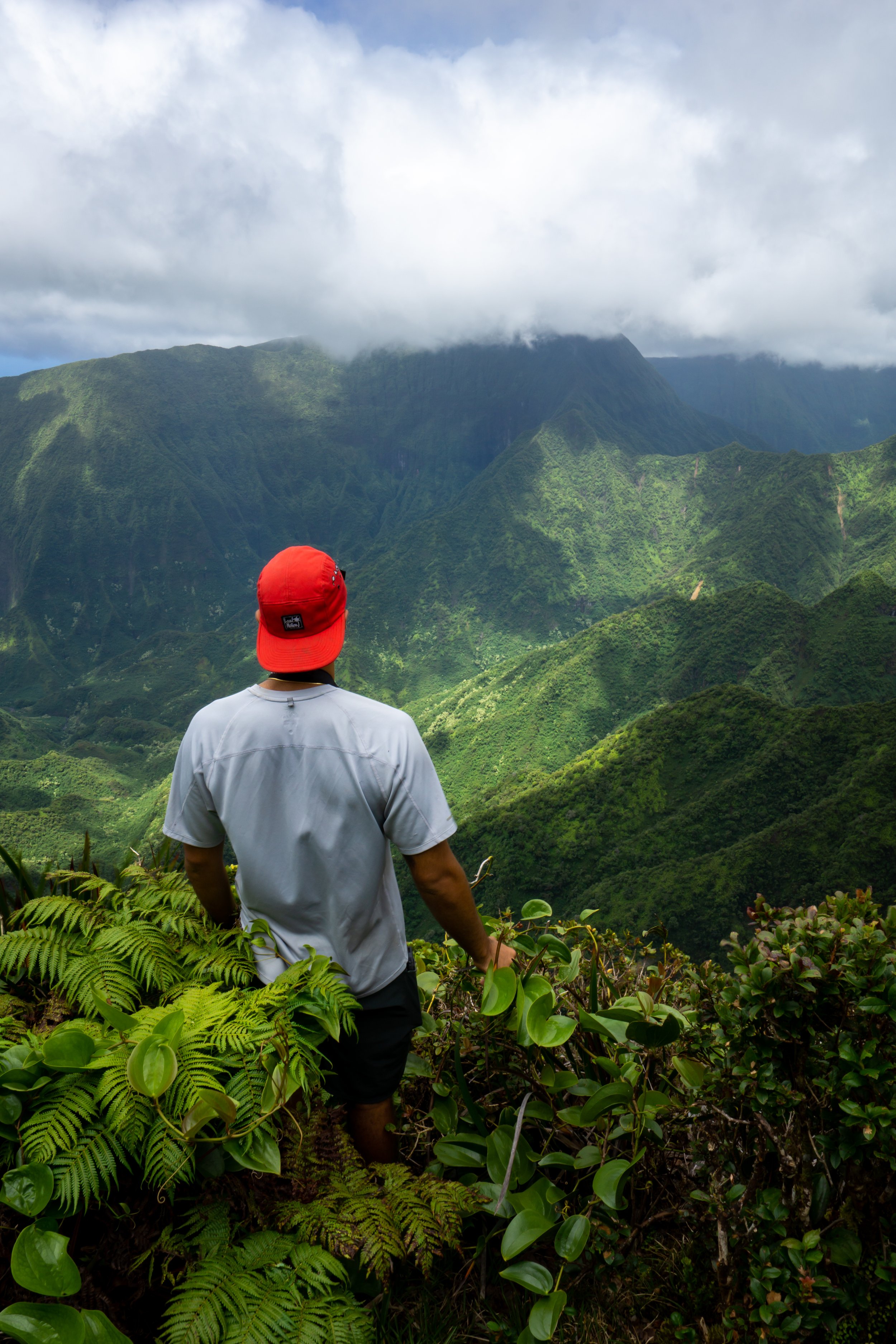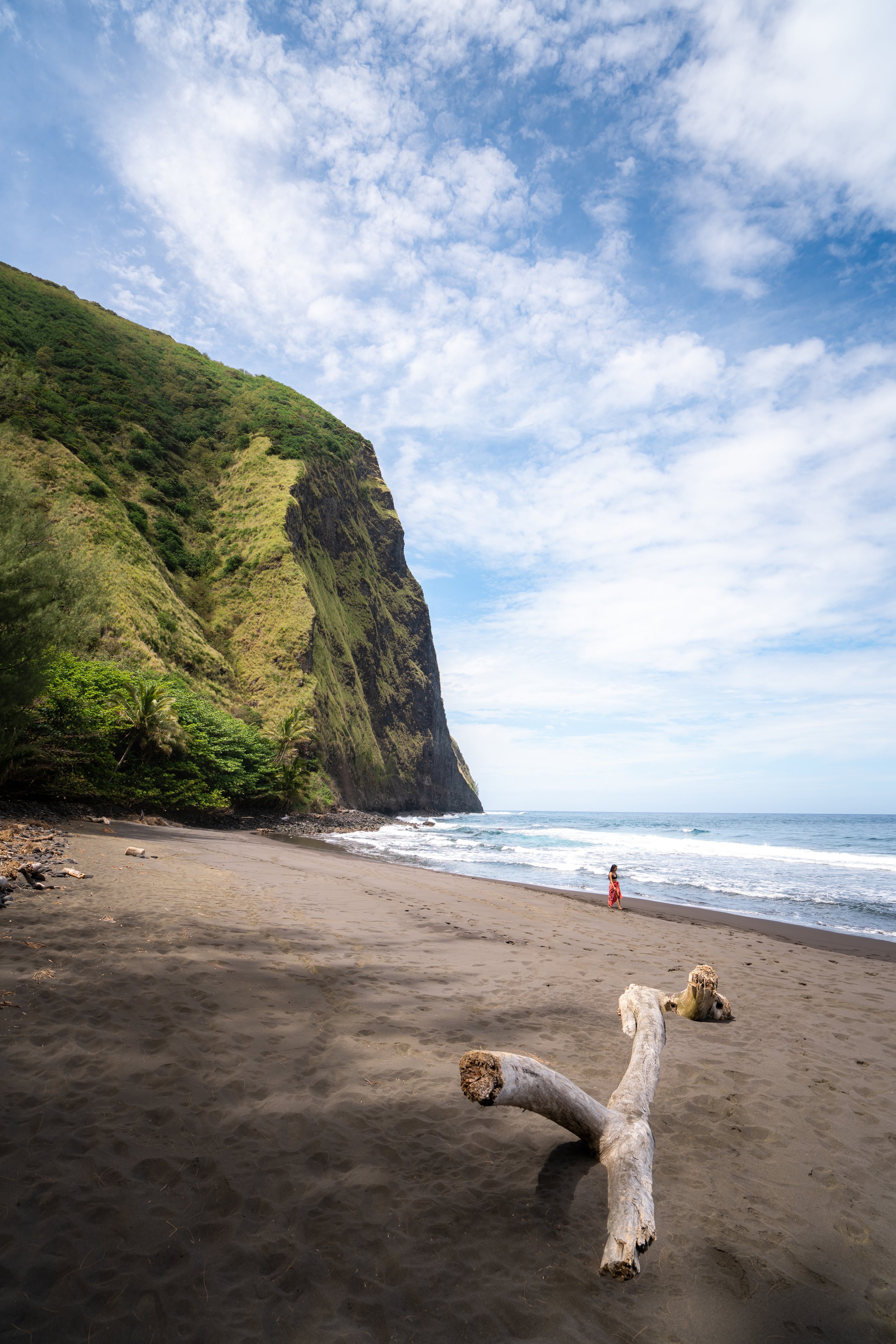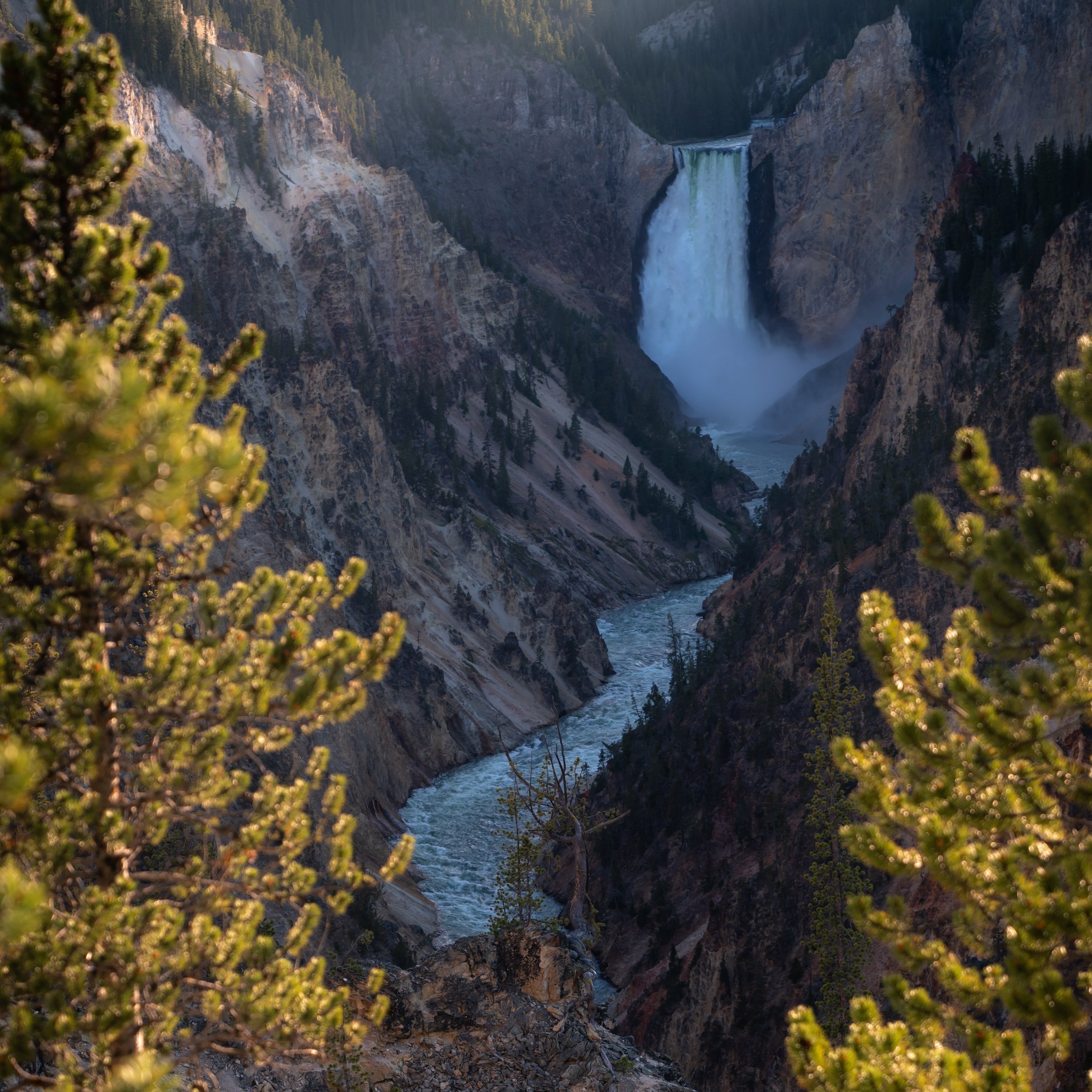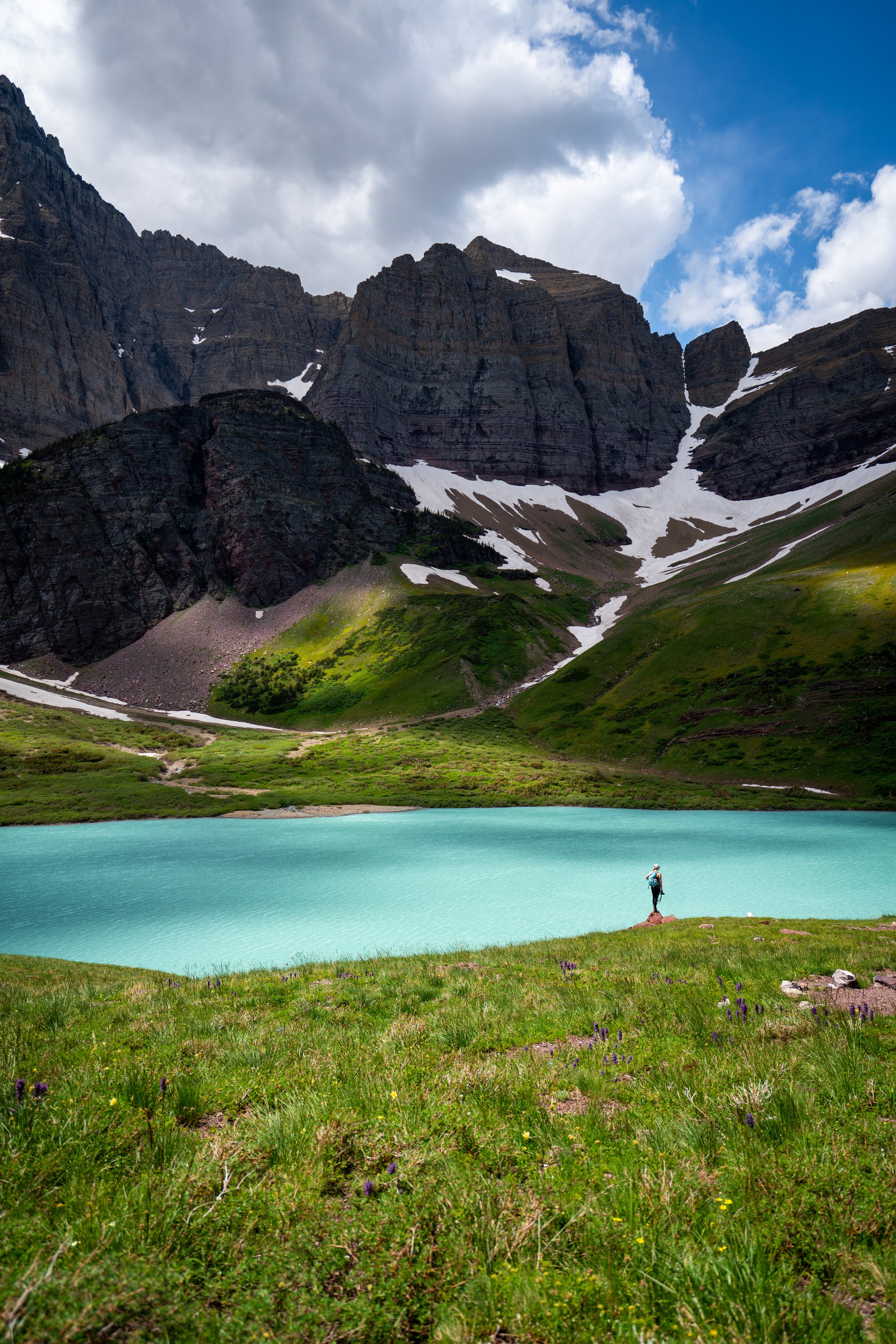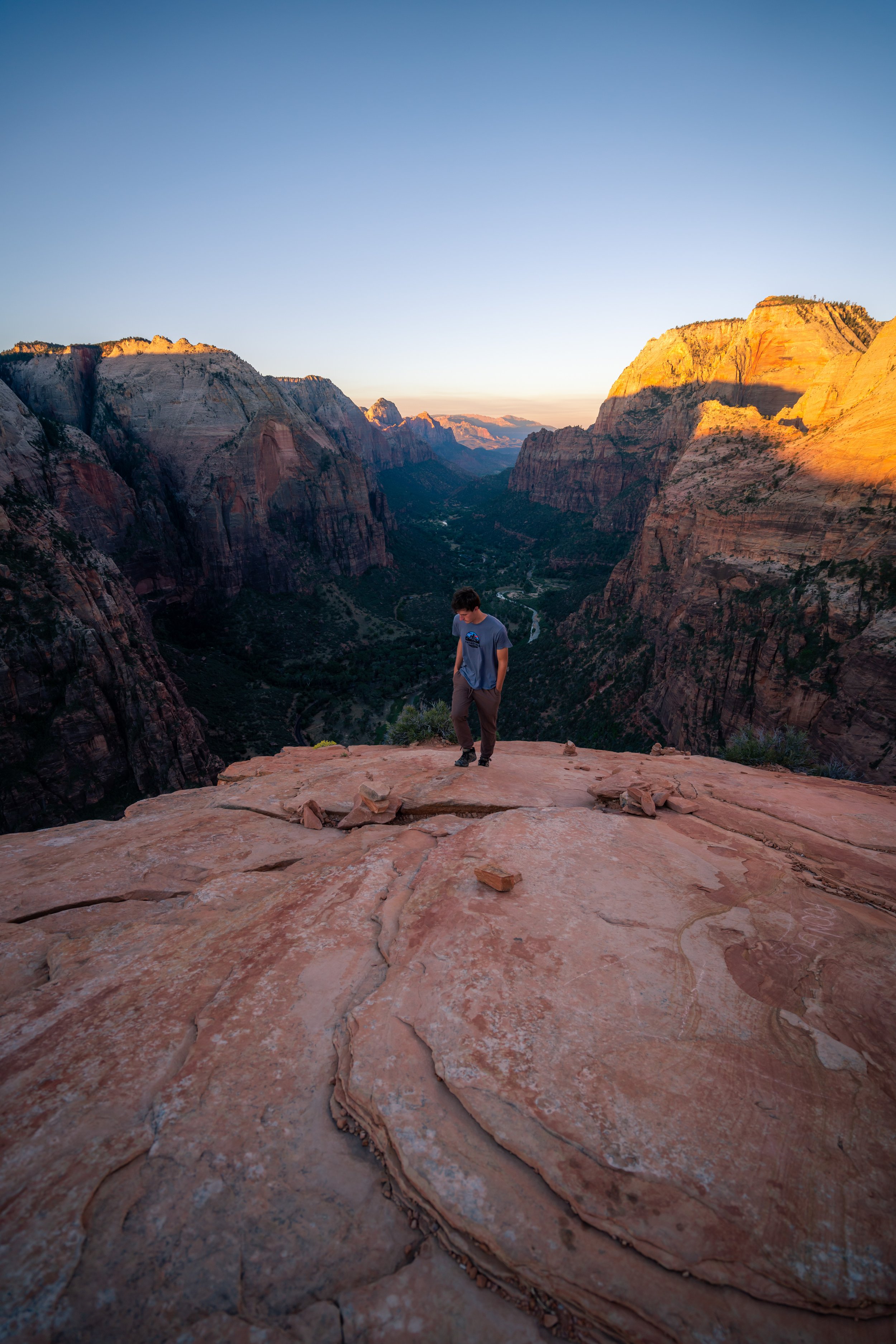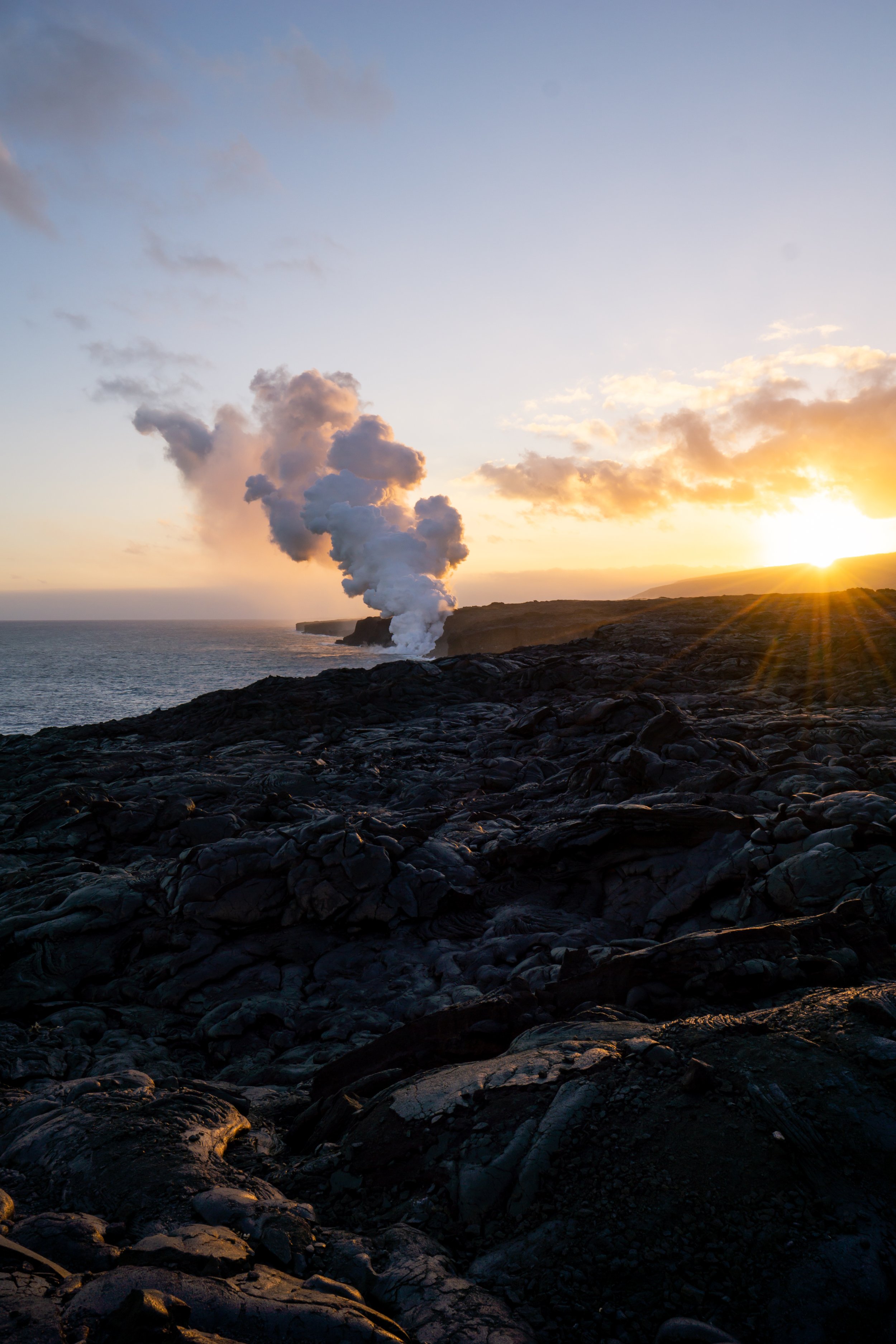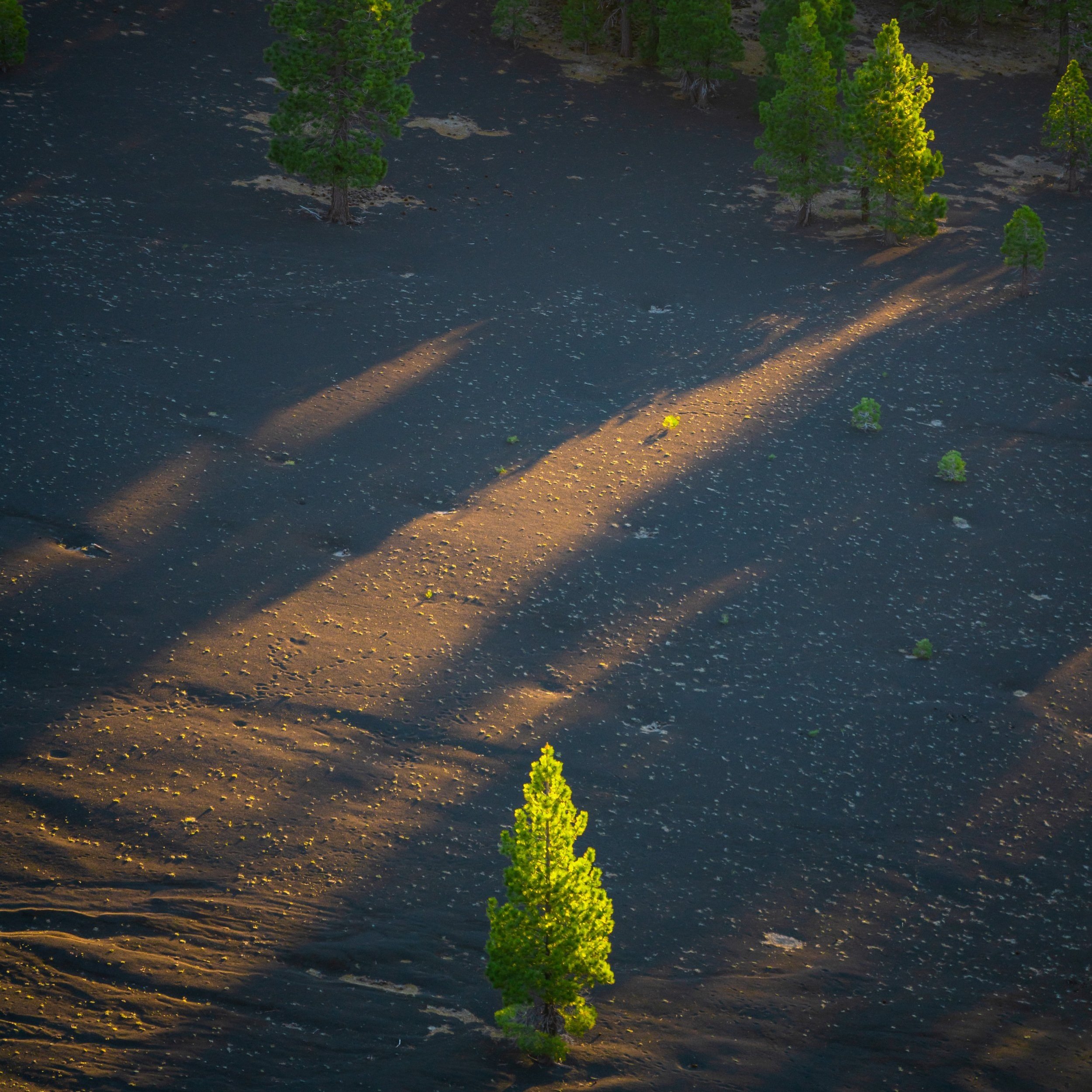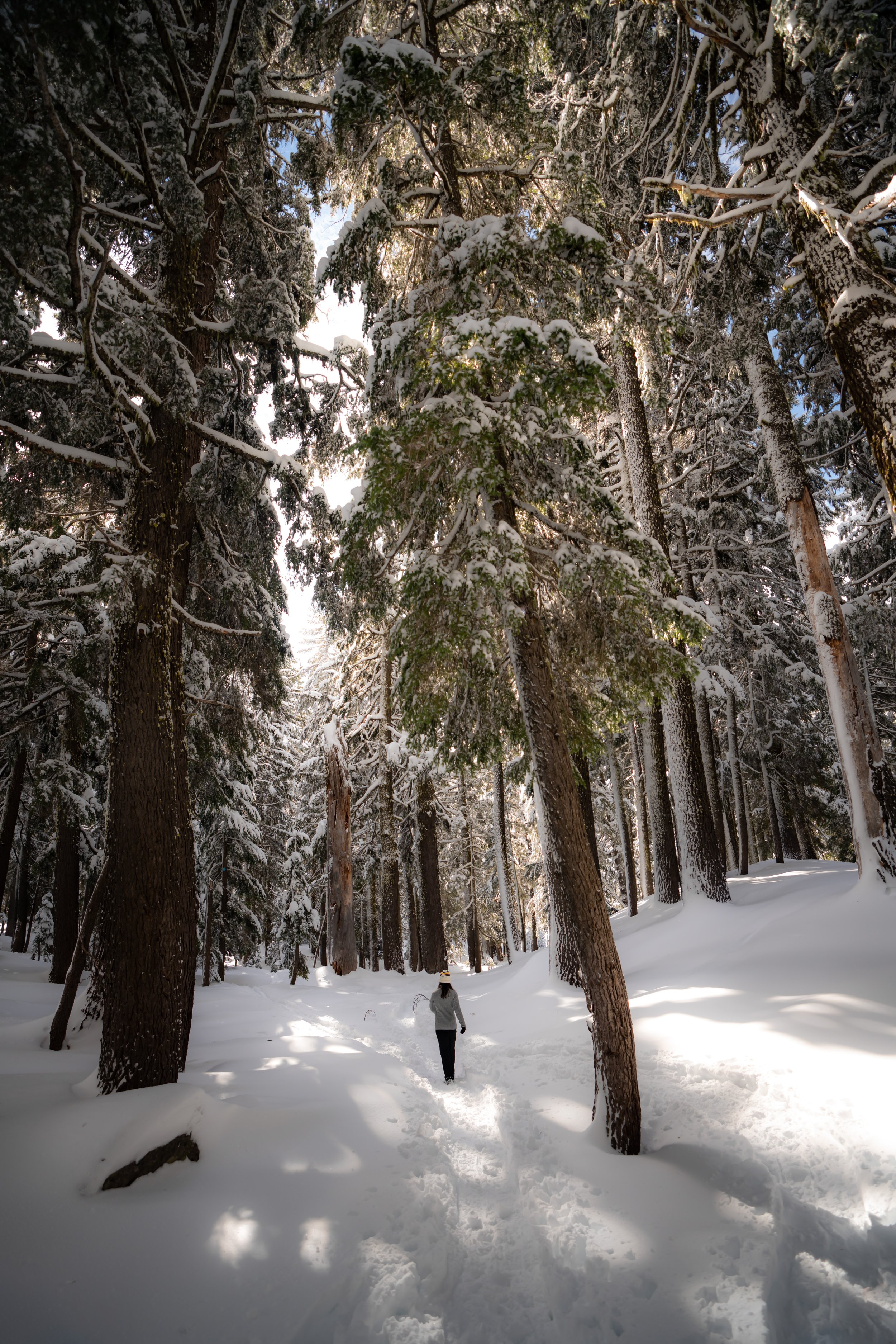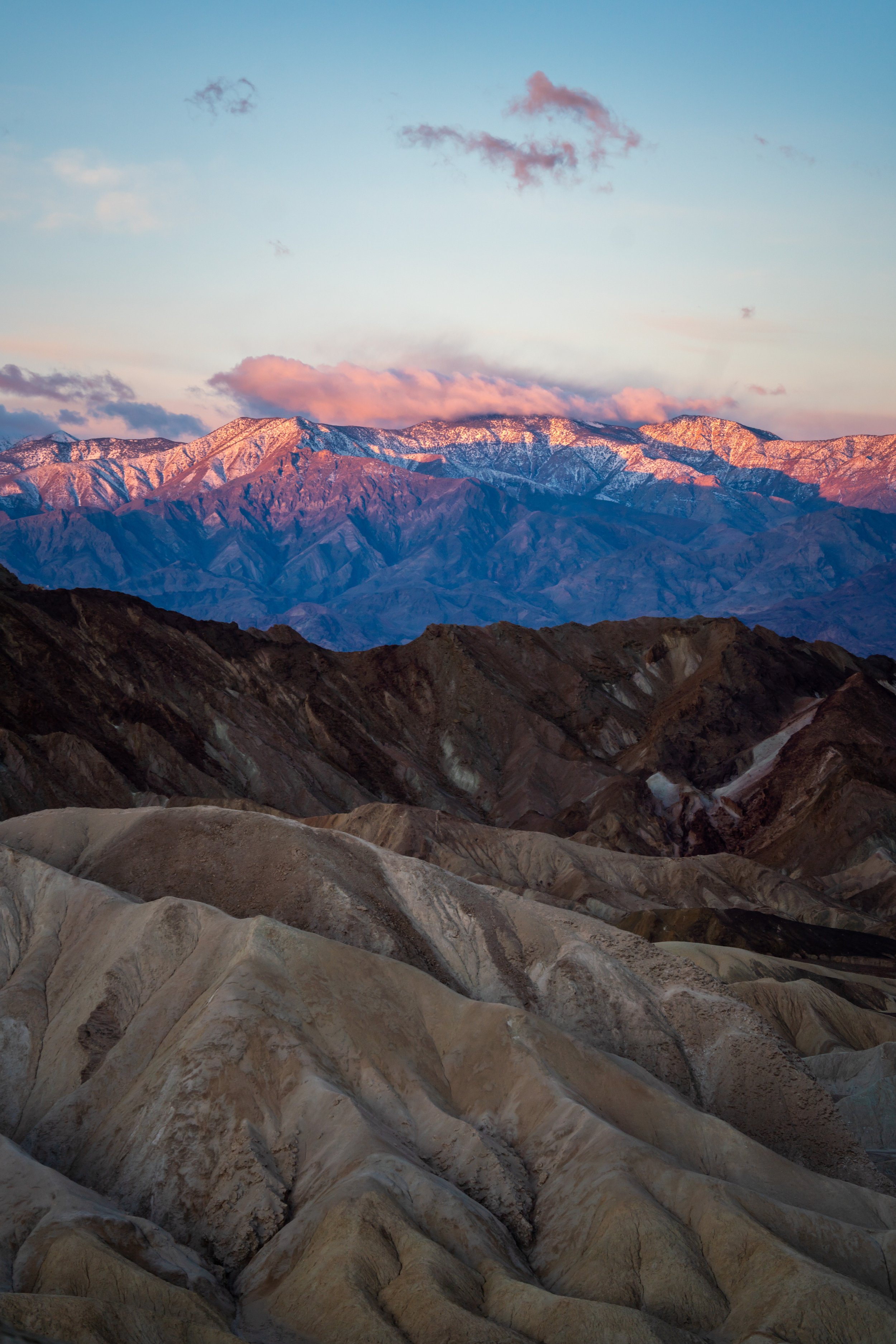Hiking the Halemaʻumaʻu Trail in Hawaiʻi Volcanoes National Park
Distance: 1.6 miles / 2.6 km
The Halemaʻumaʻu Trail in Hawaiʻi Volcanoes National Park is truly a unique adventure off the Crater Rim, as Halemaʻumaʻu is one of just two neighboring day hikes that descend below the rim of the Kīlauea Caldera, the other being the nearby Byron Ledge Trail (Uēaloha).
That said, Halemaʻumaʻu Trail is often hiked in a few different ways, most commonly as an out-and-back adventure to the bottom of the caldera or as a loop with the Byron Ledge Trail (Uēaloha), Kīlauea Iki Trail, and Crater Rim Trail.
However, this post is simply about the Halemaʻumaʻu Trail as an out-and-back day hike, beginning near the Volcano House and Kīlauea Visitor Center, which is notably shorter than hiking the full loop mentioned above.
Halemaʻumaʻu Trailhead Parking
Parking for the Halemaʻumaʻu Trail is located in the same parking lot at the Kīlauea Visitor Center.
Generally speaking, finding a parking spot at the visitor center is never too difficult, but the area typically gets much more busy by midday.
Google Maps Directions: Kīlauea Visitor Center
My Hawaiʻi Hiking Checklist
Osprey 3L Water Bladder - The Osprey 3L water bladder is the most universal hiking and backpacking water bladder on the market, and it’s my go-to because of the slide-off seal that allows it to be quickly filled from the top. Additionally, individual parts are easily replaceable, such as the bite valve.
Blister / Heel Protectors - I swear by these cheap, amazing heel protectors to prevent blisters for nearly every kind of hiking and backpacking that I do!
Black Diamond Headlamp - Personally, I recommend the Black Diamond Storm because it is one of the brightest, lightest, and longest-lasting headlamps on the market—and trust me, the weight-to-battery-life ratio really does matter!
Hiking / Trail Running Shoes - Depending on the type of trail, I prefer to use either the Keen Targhee for longer, more rugged hiking or the HOKA Zinal Trail-Running Shoe for lighter, less intense trails. In either case, both have been amazing to me for many years across countless environments, and both can be found in men’s and women’s sizes. - (Men’s Keen / Women’s Keen) (Men’s HOKA / Women’s HOKA)
Waterproof Rain Shell - You never know when it may rain, and I’ve learned over the years that a rain shell is far better than a rain jacket. By this, I mean that it’s best to have something that the water will roll right off of, which is why I recommend the Patagonia Torrentshell 3L available in both men’s and women’s sizes.
High SPF Sunscreen - Packing high-SPF sunscreen is a must for long days outside!
Hiking the Halemaʻumaʻu Trail
The Halemaʻumaʻu Trail begins across Crater Rim Drive from the Kīlauea Visitor Center.
Walk along the path adjacent to the Volcano House until you see the Halemaʻumaʻu/ Crater Rim Trailhead.
Crater Rim Junction
At the Halemaʻumaʻu/ Crater Rim Trailhead, go right down the trail for 0.1 miles (0.2 km) until you reach the next split for the Halemaʻumaʻu Trail.
Overall, I highly recommend hiking more of the Crater Rim Trail than what’s shown here, as the hike around Kīlauea is easily one of the best things to do in Hawaiʻi Volcanoes National Park.
Read My Separate Post: Crater Rim Trail
Crater Rim-Halemaʻumaʻu Junction
At the next split, go left to begin the Halemaʻumaʻu Trail.
The Crater Rim Trail to the right is what leads to Haʻakulamanu (Sulphur Banks), which makes for a nice, easy loop trail as a separate adventure.
Read My Separate Post: Haʻakulamanu (Sulphur Banks) Trail
After leaving the Crater Rim Trail, Halemaʻumaʻu follows a nearly all downhill trail until reaching the Byron Ledge Trail and Kaluapele (Kīlauea Caldera), located 0.6 miles (1.0 km) away.
This is Paʻiniu, which is endemic to the Hawaiian Islands, meaning this species is found nowhere else on earth.
I say this because many of the plants found in Hawaiʻi Volcanoes are endemic to Hawaiʻi, and I ask that you do your part to minimize your impact in this natural environment.
Overall, the Halemaʻumaʻu Trail is a very straightforward hike, but as mentioned previously, it truly just depends on how far you’re looking to go.
Combining the Halemaʻumaʻu, Byron Ledge, and Crater Rim Trails makes for a roughly 2.6-mile (4.2 km) loop, which is another great option to circle back to the Kīlauea Visitor Center.
Halemaʻumaʻu-Byron Ledge Junction
Where the Halemaʻumaʻu Trail ends, the Byron Ledge Trail begins.
At this junction, go right to reach Kaluapele, which is the common ending point for both the Halemaʻumaʻu and Byron Ledge Trails.
Kaluapele (Kīlauea Caldera)
Kaluapele, or more commonly called the Kīlauea Caldera, is closed to hikers because of the obvious dangers past this point.
Still, the hike down Halemaʻumaʻu to Kaluapele when Kīlauea was erupting was worth the trip alone, especially since so few hikers were on the trail this late in the afternoon.
Native Plants on the Halemaʻumaʻu Trail
The Halemaʻumaʻu Trail traverses through a beautiful mix of ʻŌhiʻa lehua and ʻIlahi trees.
However, there are a number of other native species to look out for, such as Manono, Māmaki, Hāpuʻu, Palapalai, and Uluhe, to truly only name a few.
That being said, if you are curious about trying the native Hawaiian Māmaki tea, I kindly ask that you don’t harvest Māmaki from our native forests but, instead, buy from one of the local reputable vendors, such as those listed below.
If you would like to learn more about these and other native species from around Hawaiʻi, check out my separate post below.
Read My Separate Post: Native Hawaiian Plant Guide
More Hawaiʻi Volcanoes Adventures
If you’re interested in reading about some more amazing adventures within Hawaiʻi Volcanoes National Park, check out my separate posts below!
Best Hotels & Vacation Rentals on Hawaiʻi Island
Since Hawaiʻi Island is such a big island, I recommend starting your search on VRBO to find places in both Kona and Hilo.
This way, you can plan your adventures on all sides of the island without having to drive too far.
Hawaiʻi Island Airport-Hotel Shuttle
Prices on ride-share apps like Uber/ Lyft cannot beat the price of booking your hotel or vacation rental shuttle prior to arrival.
That being said, the shuttle option below is incredibly cheap, and it’s a great option to get to accommodations across the Kailua-Kona side of the Big Island!
Best Way to Book Rental Cars!
I travel quite a bit, and I know firsthand that finding a good rental car deal can be a challenge, but that’s why I recommend comparing all of your options with Discover Cars.
In short, Discover Cars is a well-known, reputable business that allows you to search for the best deal across companies, and they have the best full-refund cancellation policy I’ve ever seen, valid up to 72, or sometimes even 48, hours prior to your reservation!
Book Here: Discover Cars
Visiting Other Islands
If you are visiting Hawaiʻi Island or heading to another island, check out some of my personal recommendations for Oʻahu, Maui, Kauaʻi, Molokai, Lānaʻi, and Hawaiʻi Island (Big Island) in these separate posts.
If you’re trying to decide which island is right for your visit, check out my overview about each island in the post below.
Read My Separate Post: What is the Best Hawaiian Island to Visit?
What is the Best Time of Year to Visit Hawaiʻi?
The weather in Hawaiʻi can often appear to be warm and beautiful throughout the year, but in my experience, there is a lot more to consider when planning what time of year to visit the islands, such as what island you are considering, what sides of each island do you plan to stay, what activities are you most interested in, the wildlife, and countless other nuanced variables that can all impact the type of trip you can expect to have.
For these reasons, I highly recommend reading through my separate article to not only understand my thoughts regarding the best time of year to come to Hawaiʻi but also what you need to consider based on the time of year that you plan to visit.
Read My Separate Post: What is the Best Time of Year to Visit Hawaiʻi?
Safety
All hikes in Hawaiʻi should not be compared to trails outside of the islands, and hikers should exercise due caution on every adventure, given that many are extremely dangerous.
By this, I mean that Hawaiʻi is known for hot, humid weather, steep, dramatic, and unstable cliffs, and flash floods, which can occur without warning. Therefore, it is important that you check the local forecast, understand the physical condition of your entire group, and pack sufficient food and water before attempting any adventure.
Disclaimer
All information provided on this blog is for informational purposes only and is not intended to be a substitute for information or advice from qualified professionals or managing agencies.
Noah Lang Photography LLC makes no representations or warranties regarding the accuracy or completeness of the information provided here, and readers should use their own discretion, judgement, and seek professional advice where it is appropriate.
Furthermore, Noah Lang Photography LLC shall not be held responsible for any injuries, lost individuals, or legal issues arising from the use of information provided on this website, and if applicable, the above safety disclaimer should be referenced to provide a generic overview of the risks involved.
All said, the content on this blog is for the sole use of Noah Lang Photography LLC, and unauthorized use or reproduction of this content is strictly prohibited.
Safety
All hikes in Hawaiʻi should not be compared to trails outside of the islands, and hikers should exercise due caution on every adventure, given that many are extremely dangerous.
By this, I mean that Hawaiʻi is known for hot, humid weather, steep, dramatic, and unstable cliffs, and flash floods, which can occur without warning. Therefore, it is important that you check the local forecast, understand the physical condition of your entire group, and pack sufficient food and water before attempting any adventure.
As always, find the most up-to-date information and conditions on the official National Park website.
National Park Service: Hawaiʻi Volcanoes National Park
Disclaimer
All information provided on this blog is for informational purposes only and is not intended to be a substitute for information or advice from qualified professionals or managing agencies.
Noah Lang Photography LLC makes no representations or warranties regarding the accuracy or completeness of the information provided here, and readers should use their own discretion, judgement, and seek professional advice where it is appropriate.
Furthermore, Noah Lang Photography LLC shall not be held responsible for any injuries, lost individuals, or legal issues arising from the use of information provided on this website, and if applicable, the above safety disclaimer should be referenced to provide a generic overview of the risks involved.
All said, the content on this blog is for the sole use of Noah Lang Photography LLC, and unauthorized use or reproduction of this content is strictly prohibited.
U.S. National Parks Pass
Did you know that the same America the Beautiful Pass that grants access to all 63 U.S. National Parks can be purchased in advance at REI?
Yes, you can save time when you arrive by purchasing your National Park pass, along with your other outdoor gear, at REI before traveling to the park!
More U.S. National Parks
If you’d like to read more about some of my best recommendations when visiting other U.S. National Parks, check out some of my other posts below!
Disclosure
This post is not sponsored.
However, some of the links in this post are affiliate links, which means that I may earn a small commission if a purchase is made through one of those links. This commission comes at no additional cost to you, and I only recommend products that I personally use and believe will add value to my readers. Thank you for your support, which enables me to continue creating more!
To read the full privacy policy, click here.

About This Blog
Noah Lang Photography, also known as @noahawaii, is 100% reader-supported!
I do not accept guest articles or sponsored content of any kind on my blog, which is why, if you enjoy the outdoor and travel content I create, please consider buying me a coffee!
I appreciate your support, which helps me continue to keep this blog alive!













